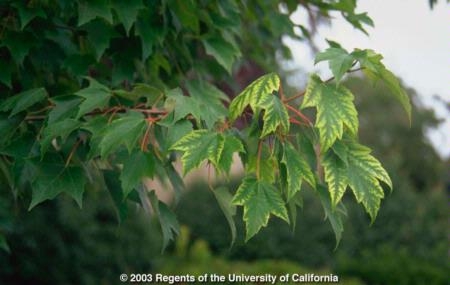Apr 25, 2011
There are 17 elements essential for plant growth. These elements come from the air, water and soil. All must be present for a healthy plant.
An excess, deficiency or even an imbalance of these elements may lead to individual symptoms which are characteristic to most plants. The appearance of a plant can be used to help identify problems. The problems can be corrected with appropriate fertilizers, amendments and manures and also by soil and water management.
To learn more about these essential elements and how to interpret distress signs plants may provide, please see this section of our website.

Magnesium deficiency symptoms in pygmy date palm (Phoenix roebelenii). As typical for magnesium deficiency in palms, the ends of these fronds are bright yellow. Photo by Donald R. Hodel.

Leaflets of potassium-deficient strawberry plants darken, beginning at the margins. Darkening may develop along the midvein, near the base of the leaflet. Photo by Albert Ulrich.

A common symptom of plants growing in alkaline soil is interveinal chlorosis on young foliage. This is due to unavailability of iron, zinc, or manganese at alkaline pH.
Topics: